Indonesian condiments are the flavorful secret behind the country's culinary magic, transforming ordinary dishes into extraordinary feasts. Picture fiery sambal igniting your taste buds with its spicy kick, while velvety kecap manis drizzles over dishes like liquid gold, adding a luscious sweetness. Indulge in the nutty richness of peanut sauce, or savor the tangy explosion of cincalok. And who could resist the irresistible crunch of bawang goreng sprinkled atop your favorite meals? These condiments aren't just accompaniments; they're the essence of Indonesia's vibrant gastronomic scene, inviting you on a mouthwatering journey of flavors and sensations that you won't soon forget.
Sambal
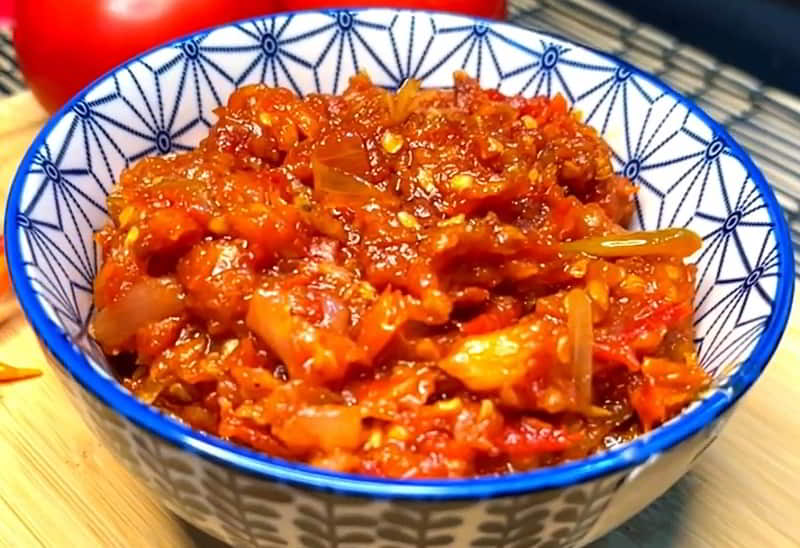
Sambal, an Indonesian condiment, enhances dishes with its spicy allure. Crafted from chili peppers, garlic, shallots, and shrimp paste, it ranges from mild to fiery hot. Versatile as a dip, sauce, or marinade, it infuses rice, noodles, meats, and seafood with its tangy kick. Cooked with oil until fragrant, sambal may include tomatoes, tamarind, lime juice, and sugar for added depth. A staple in Indonesian cuisine, it complements meals as a condiment, offering variations like sambal jenggot with grated coconut and sambal tauco with Chinese tauco. Perfect for spice enthusiasts, sambal adds an authentic touch to culinary adventures, elevating flavors and igniting the palate with its distinctive heat.
Sweet Soy Sauce
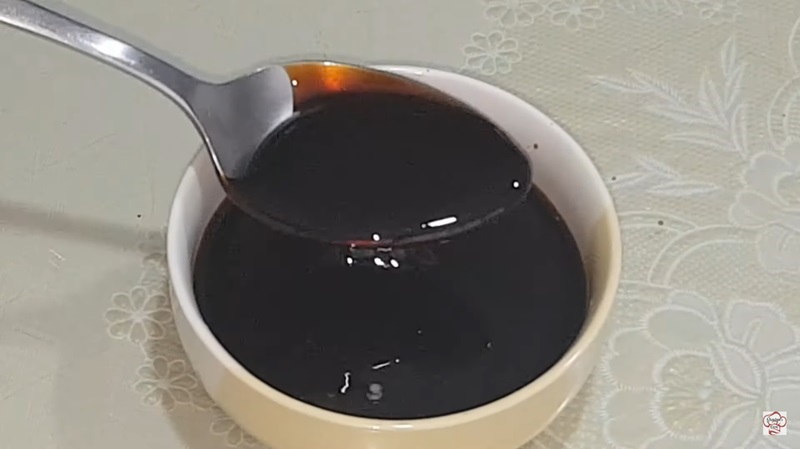
Sweet soy sauce, or kecap manis, is a luscious and fragrant condiment originating from Indonesia. Its deep hue, syrupy texture, and rich flavor stem from the addition of palm sugar or jaggery during its production process. Crafted from a fermented paste of boiled black soybeans, roasted grains, salt, water, and Aspergillus wentii mold, this sauce undergoes a transformation with the infusion of palm sugar. Typically containing up to 50 percent palm sugar, it delivers a pronounced sweetness. Indonesian sweet soy sauce is further enhanced with aromatic spices like star anise, cinnamon, black pepper, coriander, and clove, adding layers of complexity to its profile. This versatile sauce serves as a cornerstone of Indonesian cuisine, enriching dishes with its distinct sweetness and depth of flavor, making it a cherished ingredient in both traditional and modern cooking.
Peanut Sauce

Indonesian peanut sauce, or "sambal kacang," is a beloved condiment renowned for its rich flavor and creamy texture in Indonesian cuisine. Crafted from ground roasted peanuts, it boasts a delightful balance of sweetness and gentle heat. The sauce is prepared by cooking a blend of garlic, shallots, chili peppers, tamarind, palm sugar, and spices. Versatile and ubiquitous, it stars in various Indonesian dishes, notably as a dipping sauce for satay, enhancing grilled meats with its flavorful punch. Beyond satay, it doubles as a dressing for salads, vegetables, or rice dishes, adding a creamy texture and savory depth. With its harmonious blend of peanuts, spices, and other ingredients, Indonesian peanut sauce elevates culinary experiences with its distinctive taste, appealing to food enthusiasts seeking both tradition and innovation in their meals.
Acar
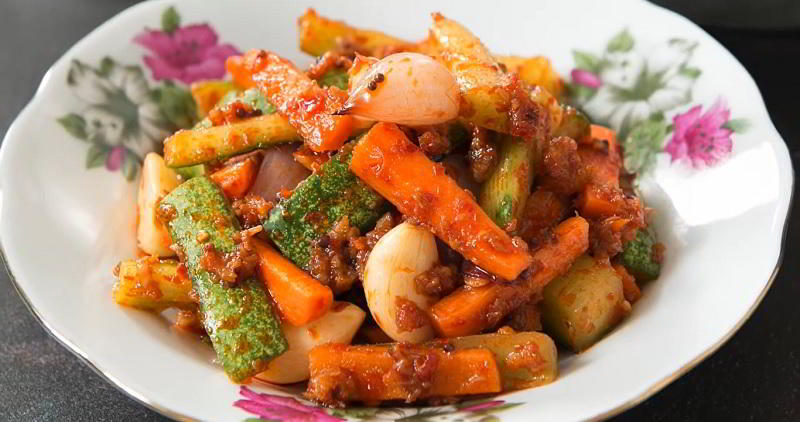
Acar, also known as Indonesian pickled vegetables, is a beloved condiment celebrated in Indonesian cuisine. It features a colorful array of vegetables, including cucumber, carrot, shallots, and chili peppers, thinly sliced and pickled in a tangy, slightly sweet vinegar solution. Infused with spices like turmeric, coriander, and bay leaves, acar boasts a distinctive and aromatic flavor profile. The vegetables are typically blanched or lightly cooked before pickling, ensuring a crisp texture while preserving their natural flavors. Often served as a side dish with main courses like nasi goreng or satay, acar adds a refreshing, tangy element that complements the richness of other dishes. With its vibrant colors, crunchy texture, and tangy-spicy taste, acar is a versatile and flavorful condiment cherished by many for its ability to enhance the dining experience in Indonesian cuisine.
Tauco
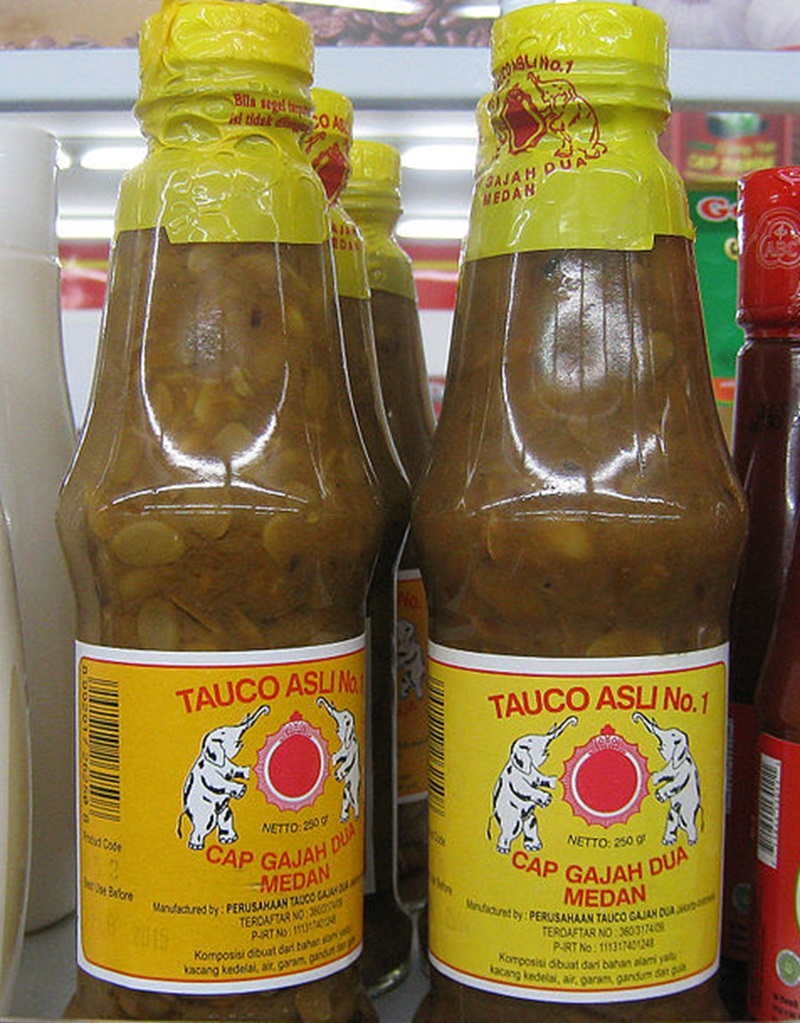
Tauco, a cherished Indonesian condiment, enhances dishes with its bold flavor profile. To create tauco, yellow soybeans undergo boiling, grinding, and fermentation into a soy paste mixed with flour. This paste is then fermented further by soaking in salt water and sun-drying for several weeks until it achieves a yellow-reddish color. The hallmark of quality tauco is its distinctive aroma, indicative of its depth and richness. Used in various Indonesian dishes, tauco adds complexity and depth of flavor, elevating culinary creations with its unique taste. Its versatility allows it to be incorporated into stir-fries, soups, marinades, and sauces, contributing to the richness of Indonesian cuisine. Whether as a base ingredient or a finishing touch, tauco remains a staple condiment beloved by many for its ability to impart depth and complexity to dishes.
Cincalok
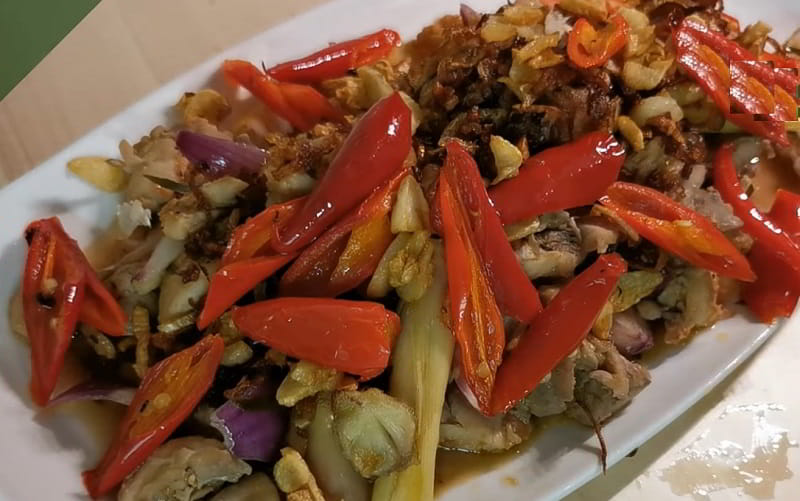
Cincalok, a cherished condiment in Indonesian cuisine, is crafted from fermented small shrimp or krill, locally known as udang geragau. Recognizable in the mixture, it exudes a predominantly salty flavor profile. Typically served alongside chili, shallots, and lime juice, it offers a delightful tangy kick. Crafting cincalok involves several steps: equal parts fresh small prawns, salt, and rice are meticulously combined, then sealed in a jar for a three-day fermentation period. Some cincalok makers opt to increase the rice proportion, believing it enhances the final flavor. This process yields a complex and savory condiment that enhances the taste of various dishes, offering a unique glimpse into the culinary traditions of the region.
Bawang Goreng

Bawang goreng, a popular condiment in Indonesian cuisine, consists of crispy fried shallots used as a garnish for a wide array of dishes. Shallots are thinly sliced and deep-fried until they achieve a golden, crispy texture in ample cooking oil. Once fried to perfection, they are commonly stored in a tightly sealed glass jar for convenient use in future culinary endeavors. This crunchy topping not only adds texture but also imparts a rich, savory flavor to dishes, enhancing their overall taste profile. Whether sprinkled over soups, salads, rice, or noodle dishes, bawang goreng serves as a versatile and beloved accompaniment in Indonesian kitchens. Its simplicity, combined with its ability to elevate the flavors of various dishes, has made it a staple condiment cherished by many.
Dabu-Dabu
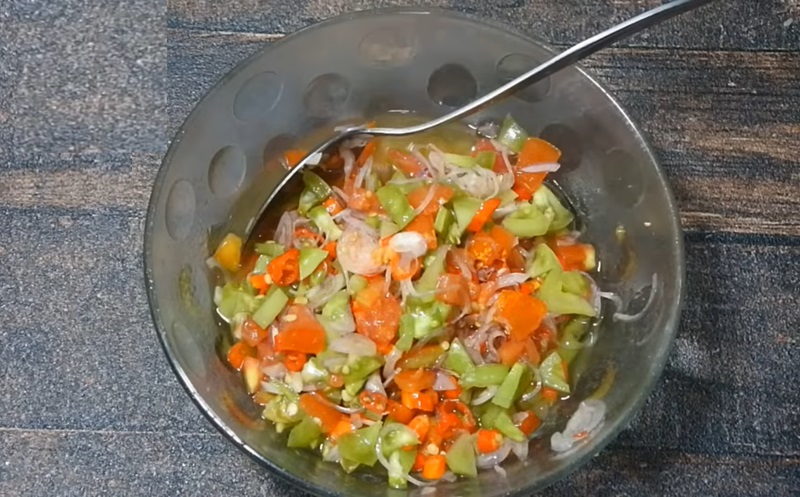
Dabu-dabu, a fiery condiment prevalent in Manado cuisine of North Sulawesi, Indonesia, comprises shallots, bird's eye chili, diced red chili peppers, and red and green tomatoes, seasoned with salt and sugar. The mixture is then infused with the tangy freshness of calamansi juice, locally referred to as lemon cui or jeruk kesturi. Occasionally, kaffir lime or lemon juice is used as a substitute. The combination of chili peppers and citrus lends dabu-dabu its signature zesty, sour, and spicy flavor profile, which adds a vibrant kick to dishes. This versatile condiment serves as a refreshing accompaniment, elevating the taste of various local specialties with its bold and invigorating blend of flavors.
Colo-Colo
-1715076083.jpg)
Colo-colo, a popular condiment originating from the Maluku Islands of Indonesia, is a zesty and spicy sauce that adds depth of flavor to dishes. It typically consists of diced red and green chili peppers, shallots, garlic, tomatoes, and lime juice, all mixed together with salt and sugar. Sometimes, additional ingredients like shrimp paste or fish sauce are incorporated to enhance the umami taste. The result is a vibrant and aromatic sauce with a perfect balance of heat, tanginess, and sweetness. Colo-colo is often served as a dipping sauce for grilled or fried seafood, chicken, or vegetables, adding a burst of flavor to each bite. Its versatility also makes it a great accompaniment to rice dishes, noodles, or salads, providing a delightful and refreshing kick to Indonesian cuisine.






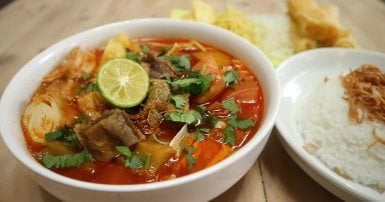

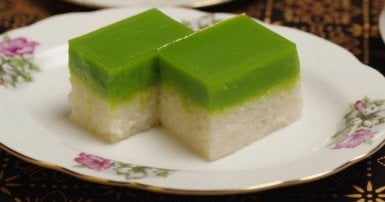
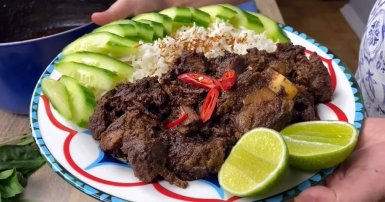
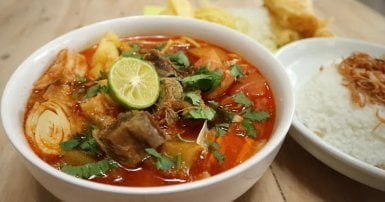


-1709813013.jpg)


